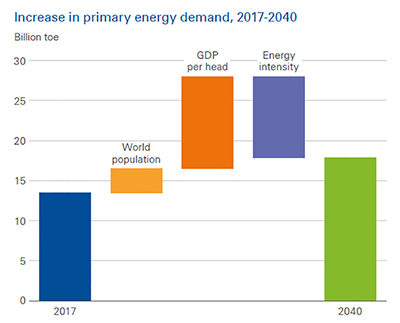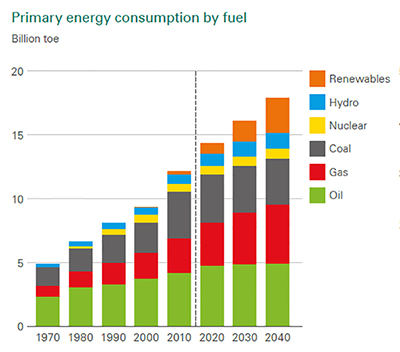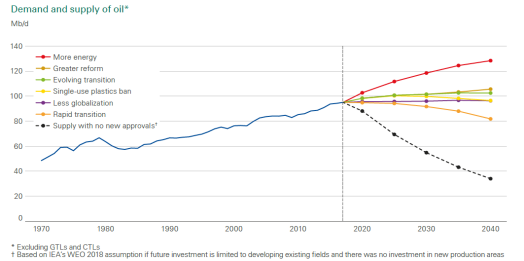Energy companies as BP and Shell have released trend forecasting of global energy development lately. Although the details of the relevant calculations are different, the major institutions in the energy industry are basically move towarding the same direction.
This article extracts some of the points in the relevant report and attempts to analyze and explain it:
Firstly, Experts and executives from major companies from the industry have emphasized the importance of environmental protection and social responsibility. Reducing carbon emissions is a common goal of the energy industry and national policy departments. Energy conservation and emission reduction has been a hot topic in the industry over the past few years. It has also reflected its influence in the changing energy structure.
Taking coal as an example, although it is a relatively easy-to-use and disposable energy source, it is suppressed by governments and energy companies because of its high carbon emissions. On the other hand, the promotion of renewable energy is not comes from its superior economic and technical feasibility, but because of the global demand for energy conservation and emission reduction.

(Source: BP Energy Outlook, 2019 Edition)
Conclusions like this may lead to doubts. Therefore, we are wondering why people are slowing down the demand for future energy?
First, we need to understand the main reasons driving the growth of energy demand: there is no doubt that economic development is the main driving force for energy consumption, and more new energy production, trade, and a more comfortable living and working environment require more energy to support. Another driving force for energy consumption is the growth of the global population. Everyone is the end user of energy. The more users, the greater demand. At the same time, as more and more low-income people around the world get out of the predicament and become middle-income people, their unit energy consumption will also increase, and the total energy consumption would further increase.
However, we tend to neglect another key factor that affecting energy demand – technology development. The development of energy technology has affected the efficiency of energy use. From steam engines to internal combustion engines, the utilization of energy has been greatly improved, thus reducing the demand for energy. By the same token, we could use less raw materials to get more energy with the development of technology, so that the demand for energy would be further reduced.

(Source: BP Energy Outlook, 2019 Edition)
As shown in the chart above, due to the decreasing growth in global population, and the rapid growth of energy utilization, the rate of global energy growth has dropped from 2% per year in the previous 20 years to 1.2% in the next 20 years.
In terms of geography, China would play an important role in the future structure of global energy, and the changing supply and demand of energy is affecting the world. China's demand for consumption for industrial energy has been plummeted. Although its consumption for industrial energy has tripled in the first 20 years, it would peak in around 2025 and then face a decreasing trend.

(Source: BP Energy Outlook, 2019 Edition)
However, the decrease for the figure above does not mean that the Chinese economy is sluggish and stagnant. Conversely, the reason for reducing consumption is increased efficiency of existing capacity, supply-side reform policies, and industrial transformation and upgrading (from energy-intensive industries to tertiary industries).
In addition, although China's overall energy consumption growth rate is about to slow down, its total volume will remain in a leading position. China's energy market would become twice of the Indian market by 2040.
In terms of energy types, although renewable energy and natural gas are growing strongly, oil still maintains the No. 1 position in one-off energy demand and maintains a growth rate of 0.3% per year for more than 10 years.

(Source: BP Energy Outlook, 2019 Edition)
In a short time, no energy could replace the dominant position of oil. It is playing an important role in our political and economic structure, because of its stable production capacity, mature industrial chain, infrastructure, and end-use consumer products that are inseparable from our lives.
The steady supply of oil requires sustained capital investment. From exploration, production, processing, refining to final product formation, each process requires huge capital investment. Compared with the well-developed onshore processing and refining process, the exploration and development of the offshore oilfield block requires a large amount and more frequent investment.

(Source: BP Energy Outlook, 2019 Edition)
The figure above depicts the oil supply and demand in different scenarios. It is estimated that the demand for oil will reach 80 million to 130 million barrels per day by 2040. If the existing capacity is maintained and new oilfield exploration and development is not done, global production capacity will fall to 35 million barrels per day by 2040. Therefore, at least trillions of dollars of related investment will be added in the next 20 years, in order to fill the gap between supply and demand in the future.
Energy is an important factor which is supporting the prosperity and development of human society and is inseparable from all aspects of our lives. Although its future trend is affected by many factors, we can still see its future based on historical development and the status quo.